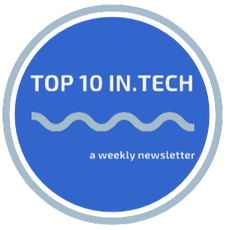|
1. SaaS METRIC OF THE WEEK: BURN MULTIPLES. In this new capital-efficient SaaS environment, operators must balance growth and efficiency. So it's time to brush up on those efficiency metrics in this 2 part post covering Burn Multiple and Sales Efficiency metrics (see post 2). A Burn Multiple measures how much a startup is burning to generate each incremental dollar of ARR. The higher the Burn Multiple, the more the startup is burning to achieve each unit of growth. Here is how to calculate this metric and here is an example.
2. SALES EFFICIENCY: Also known as the Magic Number and is the sister metric to Burn Multiples above. Sales Efficiency measures how effectively your company generates $$ via front-end spend - basically new revenue generated over a specific period with the expenses incurred on Sales & Marketing during that same time frame. Check the SaaS CFO on calculating the Magic Number, and this article deconstructs it and highlights that it's a complex metric influenced by factors like market conditions and company spending, making it difficult to pinpoint specific areas for improvement. 3. SALES TEAMS: Take a good read of this article from David Sacks on the simple math you can use to set up a sales team. Individual plans, team plans, and expansions/renewals are all considered for a high-growth sales team structure. 4. MARKETING: I feel personally attacked by the title of this article, "You Suck at Marketing." As an operator wearing many hats, including marketing, I begrudgingly have to agree. Most of what works for us is inbound and the result of Content Marketing - so read this article from the team at Organic SaaS Growth on how to be less sucky at that. 5. EXPERIMENTS: In a very enjoyable mentoring session last week, we took a deep dive into experimentation - because every day, every path you take towards growth and revenue should be a hypothesis in startup land - time to upskill your experiment skills by reading how to run a growth experiment (in 4 easy steps!). Testing versions of things is something to embed across your company and culture as you experiment toward growth - it's why failure is critical to not failing. When conducting experiments such as A/B tests, start with this refresher and then this Step-by-Step Guide. Go Practice has some great advice on how to make these experiments run faster, too. 6. FOLLOW UPS: I probably push this too hard on Sales "follow-ups" and "nudges," so I need to subject myself to this article from time to time: How often to follow up: Follow-up Frequency to Close Deals Instead of Annoying People. It was great to see "Way more than you think." though 🙂 . There is also this concept of the "Rule of 7," which states that a potential customer needs to see or hear your message seven times before they buy something. 7. AI: Last week, we saw another game changer, OpenAI, which now does text-to-video with the release of the short-form video generator Sora, and the AI formerly known as Google Bard was rebranded as Gemini. Not to be out-thunk by AI, the team at a16z has launched a thought leadership "agenda" by calling this new phase of tech change driven by generative AI the "Era of Abundance" - built onto of an AI-enabled Pitch Deck generator, of course, (gamma.app) and also came with an interesting Market Map. 8. VALUATIONS: Throwback to a 13-year-old (dotcom 2.0 bust) article that may as well have been written this year on valuation multiples and how not all revenue is treated (forward multiple) equally from Bill Gurley (of Uber fame). Adding flavor to this is a take from Santosh Sharan on the recent acquisition of Drift by SalesLoft, which he views as more of a merger so Vista Equity (the parent company of both) can keep forward multiples high, especially given the original sticker price they paid prior to the downturn. 9. CONTRACTS: This is the report none of us knew we needed - but my word, there are some insightful gems: A guide on SaaS Contracts, complete with benchmarks such as customer signature roles (3/4 are Executives), AI and ML clauses (5x increase from Q1 to Q4 last year), and the big one, time to sign - 3-5 days-ish (SMB to Enterprise). Have a read - I bet you will be pleasantly surprised. 10. CASE STUDY: Complimenting #5 above on experimenting. On the extreme end of A/B testing is booking.com, which often runs over 1,000 tests simultaneously! But here is the payoff: That flywheel enabled Booking.com to compound at healthy growth rates while maintaining ~30% EBITDA margins and scaling Google ad spend to approximately $4 billion per year! POD OF THE WEEK: Alex Lieberman and Ian Ito have done the hard work and consolidated the best podcast interviews according to a survey of over 300 people. It's an extensive list. Comments are closed.
|
|
